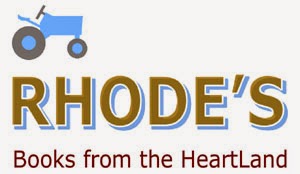My
grandfather bought a new Hudson in 1951. It was a Commodore 8 Sedan in basic
black. He purchased many (if not all) of the optional features. A few years
later, when I was old enough to appreciate cars, I thought Grandpa’s vehicle
was the most spectacular automobile on the road.
 |
| Seymour Alfred Rhode's 1951 Hudson Commodore 8 Sedan |
I was
intrigued with the push-button radio. For better reception, a knob above the
windshield could be turned to rotate a small antenna into an upright position.
When doors were opened, small lights in the door panels came on so that the
driver or passengers would not trip over the doorsills at night. The upholstery
(dark green and golden tan, as I remember) felt swanky.
On Easter
one year when we were boys, my brother and I were dressed in matching brown suit coats with brown
shorts and brown caps with small bills. We were invited to sit in the back seat
of the Hudson while Grandpa drove us the mile from our house to the church. I
felt that we were riding in a high style indeed!
The
exterior of the car was shaped like the back of a duck. Now that I think about
it, the contours probably gave the automobile superior aerodynamic properties.
I recall that the Hudson wanted to go fast down a highway.
When my
brother attended Indiana University, he needed a car, and my parents agreed
that he should have the Hudson, which they had inherited. I was an entering
student at IU, and I enjoyed weekends when my brother and I took the Hudson off
campus to visit neighboring towns. One of my favorite recollections is driving
along with the windows down on a crisp fall day with the spectacular autumn
colors of the Brown County landscape passing by. Life really did not get much
better than that!
As I
contemplate vehicles I have known and loved, I think what a difference various
cars and trucks have made in my existence. While I have appreciated various
cars that I have owned in recent years, none of them have carried the mystique
that surrounded those automobiles that first entered my developing
consciousness. Was I so young that I was more impressionable then, or were the
vehicles themselves more exciting? I can attest that riding in the Hudson was a
thrill in any year from the time when my legs swung off the edge of the seat
until I was a college freshman.
When my
father passed away, the Hudson was in a garage where it had been parked since
my brother no longer needed it. While my brother and I were preparing for the
estate auction, we discussed whether he wanted to restore the car. It had been
sitting for so long that the tires were flat. Mice had invaded the interior and
had destroyed the once luxurious upholstery. My brother wisely decided that a
restoration would be a challenge too great for him at that time in his life. We
sold the car at the auction. I hope whoever bought it brought it back to its
former glory because it was truly a thing of beauty!




